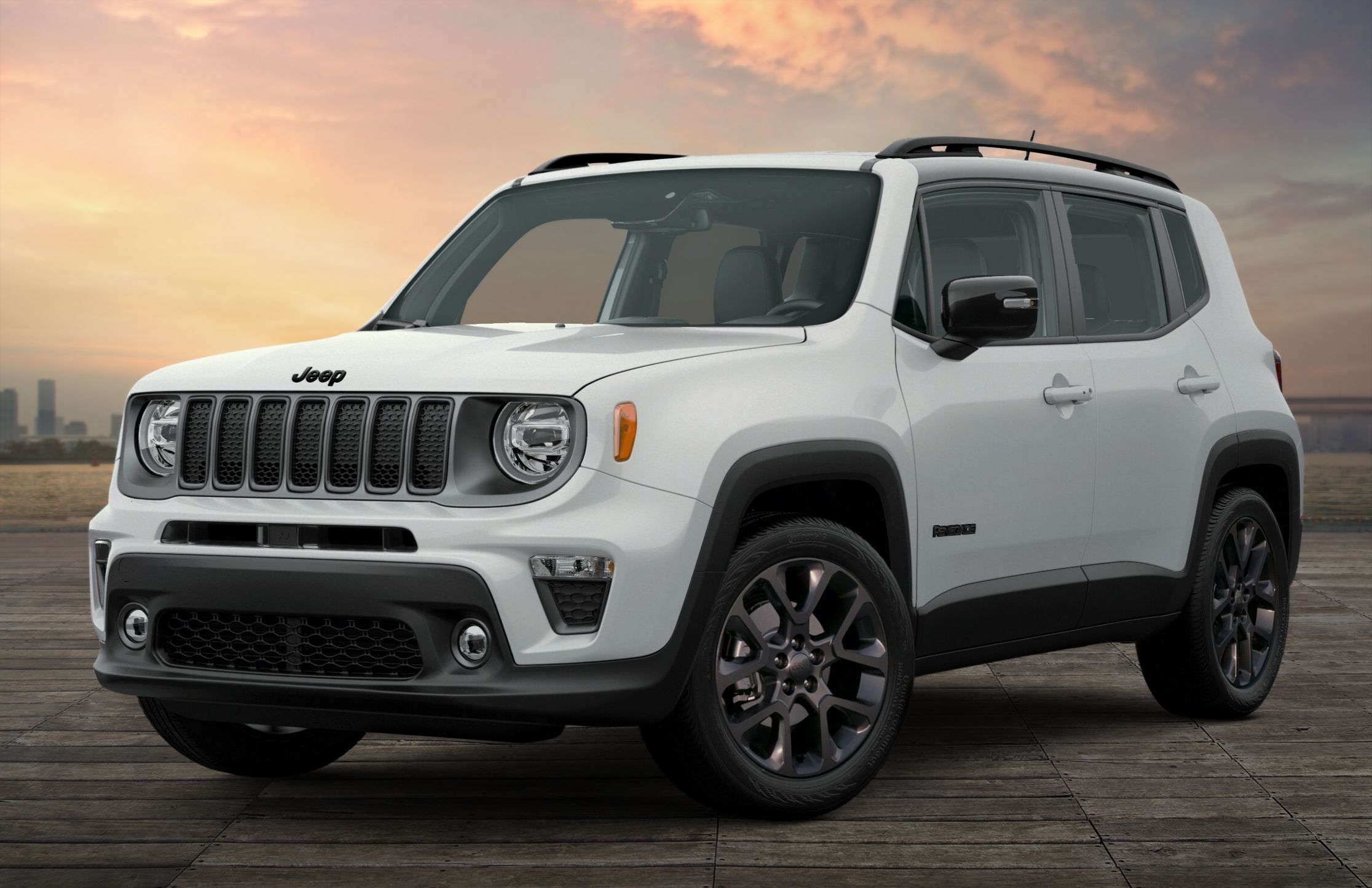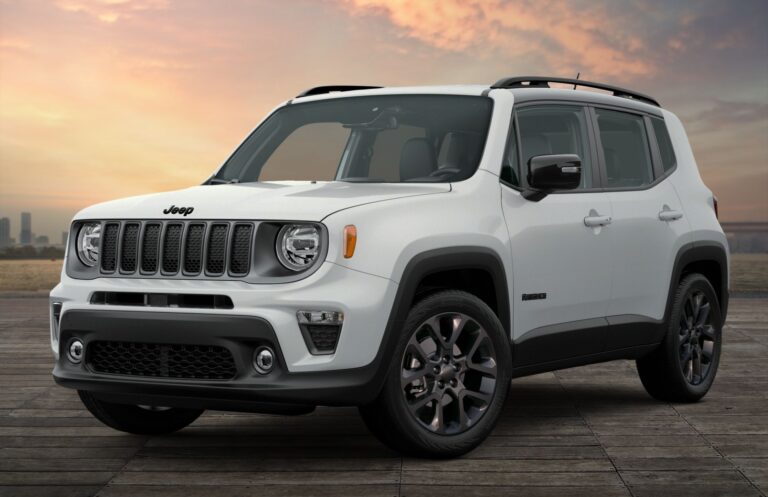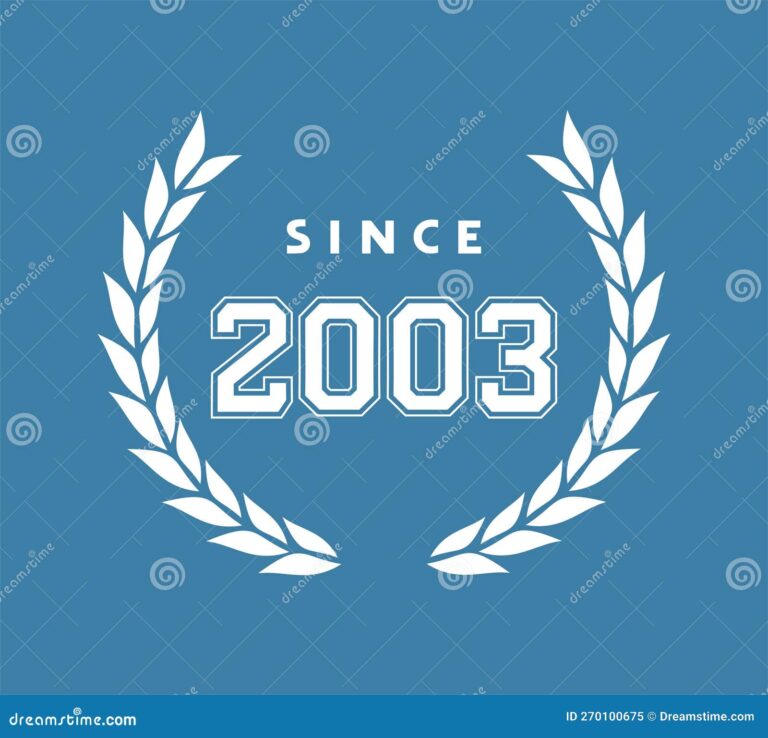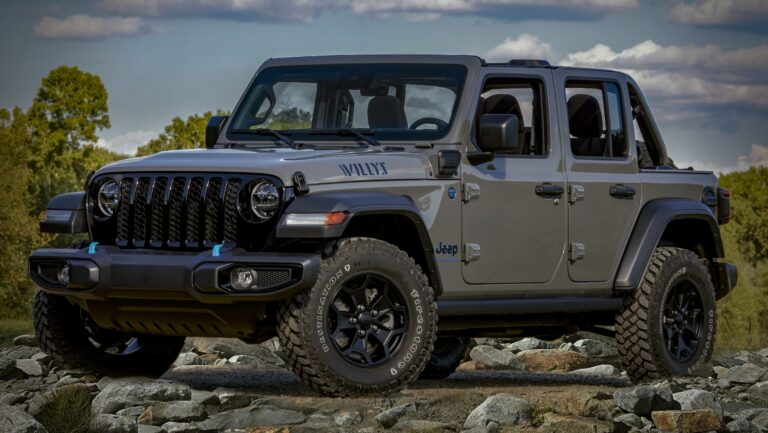Jeep YJ Chassis For Sale: Your Ultimate Guide to Restoration and Custom Builds
Jeep YJ Chassis For Sale: Your Ultimate Guide to Restoration and Custom Builds jeeps.truckstrend.com
The iconic Jeep YJ Wrangler, produced from 1987 to 1995, holds a special place in the hearts of off-road enthusiasts and classic vehicle collectors alike. Known for its distinctive square headlights and rugged leaf-spring suspension, the YJ embodies the quintessential spirit of Jeep. However, like many vehicles of its era, time, harsh environments, and the rigors of off-road adventures often take their toll, particularly on the structural integrity of its frame. This is where the quest for a "Jeep YJ Chassis For Sale" becomes paramount, serving as the foundation for countless restoration projects, custom builds, or simply replacing a severely compromised original frame. Acquiring the right YJ chassis is not just a transaction; it’s the critical first step in breathing new life into a beloved classic, ensuring its longevity and capability for years to come.
This comprehensive guide will navigate the intricacies of finding, evaluating, and purchasing a Jeep YJ chassis, offering practical advice and actionable insights for anyone embarking on this exciting journey.
Jeep YJ Chassis For Sale: Your Ultimate Guide to Restoration and Custom Builds
Why Buy a YJ Chassis? The Foundation of Your Dream Jeep
The reasons for seeking out a standalone Jeep YJ chassis are varied, but they all converge on the need for a solid, reliable foundation.
- Restoration Projects: Many YJ owners cherish their vehicles but face the grim reality of a severely rusted or damaged frame. A replacement chassis allows for a complete, frame-off restoration, preserving the original body and components while ensuring structural integrity. This is often more cost-effective and practical than attempting extensive frame repair.
- Custom Builds and Swaps: The YJ chassis is a popular choice for custom projects, including engine swaps (like LS conversions), stretched frames for longer wheelbases, or specialized off-road applications. Starting with a bare or lightly equipped chassis provides a clean slate for ambitious modifications without inheriting the issues of a complete, worn-out vehicle.
- Rust Repair/Replacement: For Jeeps subjected to salty roads or humid climates, frame rust is an unavoidable enemy. Critical areas like skid plate mounts, spring perches, and crossmembers often corrode beyond safe repair. A replacement chassis is the definitive solution to these structural compromises.
- Salvage Title Vehicles: Sometimes, a YJ with a clean body and desirable components might have a salvage title due to frame damage. Acquiring a solid chassis can turn a seemingly lost cause into a viable project, leveraging the good parts of the donor vehicle.

Understanding the YJ Chassis: What Makes it Unique?
Before diving into the market, it’s crucial to understand the fundamental characteristics of the YJ chassis and how it differs from its predecessors and successors.
The YJ chassis is a full, ladder-style frame designed for durability and off-road articulation. Its most notable features include:
- Leaf Spring Suspension: Unlike the coil springs found on the later TJ and JK Wranglers, the YJ utilizes leaf springs at all four corners. This design is robust and relatively simple, though it impacts ride quality compared to coil-sprung setups.
- Rectangular Headlights: While not a chassis feature, the YJ’s distinctive square headlights are a quick visual cue that helps differentiate it from the round-headlight CJ and TJ models, which have different frame dimensions and body mounting points.
- Frame Dimensions: The YJ frame has specific dimensions and body mount locations that are unique to its model. While some components might be interchangeable with other Jeep models, a YJ body will only directly bolt onto a YJ frame.
- Common Weak Points: Familiarity with the YJ’s typical rust zones is paramount. These include:
- Skid Plate Mounts: The frame sections where the transfer case skid plate bolts on are notorious for trapping moisture and rusting through.
- Spring Perches and Hangers: The areas where the leaf springs attach to the frame are highly susceptible to corrosion due to stress and water accumulation.
- Rear Crossmember: The rearmost crossmember, often supporting the bumper and hitch, is another common rust spot.
- Body Mounts: These points, where the body attaches to the frame, can also rust out, leading to body sag or misalignment.
- Frame Rails: While generally robust, severe rust can compromise the main frame rails, especially in the middle section and near the rear wheels.
Types of YJ Chassis Available
The market offers a range of YJ chassis types, each with its own advantages and price point:
- Used/Salvaged Chassis: These are frames pulled from donor vehicles. Their condition varies wildly, from relatively solid with surface rust to severely compromised. They are typically the most affordable option but require the most diligent inspection.
- Refurbished/Blasted/Coated Chassis: Some sellers or specialized shops offer used frames that have been sandblasted, inspected, repaired (if needed), and then coated with rust-preventative paint or primer. These offer a good balance of cost and condition, saving significant prep work.
- Aftermarket/Replacement Chassis: Several manufacturers produce brand-new, often stronger, and sometimes customized YJ frames. These are the most expensive option but offer a perfect, rust-free foundation, often with improvements like thicker steel or integrated reinforcements. They may come bare or with various levels of completeness (e.g., with suspension mounts welded on).
Where to Find a YJ Chassis For Sale
The search for a YJ chassis can take you to various places:
- Online Marketplaces:
- eBay: Often has a selection of used, refurbished, and sometimes new aftermarket frames. Be wary of shipping costs.
- Craigslist & Facebook Marketplace: Excellent for finding local deals, reducing or eliminating shipping costs. Requires direct communication and in-person inspection.
- Jeep-Specific Forums & Classifieds: Websites like JeepForum.com, WranglerForum.com, or dedicated YJ enthusiast groups often have classified sections where members sell parts.
- Specialized Off-Road Shops & Salvage Yards: Many shops that specialize in Jeep repair or customization may have donor vehicles or connections to salvage yards that can source frames. Some auto recyclers also specialize in Jeeps.
- Private Sellers: Keep an eye out for "parting out" listings, where individuals are dismantling a YJ. This can sometimes yield a good frame at a reasonable price.
- Aftermarket Manufacturers: Companies like Throttle Down Kustoms (TDK), JeepFrames.com, or others specialize in building new replacement frames.
What to Look For When Buying: A Critical Inspection Guide
This is arguably the most crucial step. A thorough inspection can save you immense headaches and costs down the line.
- Rust, Rust, Rust! This is the primary concern.
- Skid Plate Mounts: Check thoroughly for holes or severe flaking.
- Spring Perches/Hangers: Inspect all eight (four perches, four hangers) for rot, especially where they meet the frame.
- Crossmembers: Pay close attention to the front, middle (often under the transmission), and rear crossmembers.
- Body Mounts: Check all seven (three on each side, one at the very front) for integrity.
- Main Frame Rails: Look for deep pitting, soft spots, or sections that feel thin when tapped with a hammer. Pay extra attention to the areas above the axles and near the steering box.
- Straightness and Damage:
- Accident Damage: Look for kinks, bends, or repaired sections that indicate a previous collision. A bent frame is nearly impossible to straighten properly.
- Off-Road Abuse: Check for dents, scrapes, or areas that have been "rock-crawled" excessively, potentially weakening the frame.
- Previous Repairs: If repairs have been made, assess the quality of the welds. Poorly executed welds can be weaker than the original material. Look for signs of excessive grinding or patch panels that hide underlying issues.
- Completeness: Is it a bare frame, or does it come with suspension components, axles, or steering boxes? A "rolling chassis" includes axles, suspension, and sometimes steering components, which can be a significant advantage if those parts are in good condition.
- VIN (if applicable): If you’re buying a complete vehicle or a frame that still has a VIN tag, ensure the VIN matches any associated paperwork. Understand your local laws regarding VIN transfers for frame swaps.
The Buying Process & Important Considerations
Once you’ve found a potential chassis, here’s what to consider:
- Budgeting: Factor in not just the purchase price, but also:
- Shipping Costs: Freight shipping for a frame can be substantial (hundreds to over a thousand dollars), especially for long distances. Local pickup is always ideal.
- Preparation Costs: Even a "good" used frame will likely need blasting, minor repairs, and coating.
- Ancillary Parts: Will you need new body mounts, spring perches, or other small components?
- Shipping and Transportation: A bare frame is large and heavy. Plan how you will transport it. Freight companies specialize in this, but local pickup with a suitable trailer is often the most economical.
- Legal Aspects: In some states, a frame swap might require inspection or re-titling if the VIN is on the frame. Research your local Department of Motor Vehicles (DMV) regulations thoroughly.
- Skills and Tools: A frame swap is a major undertaking. Be realistic about your mechanical skills, available tools (hoists, welders, grinders, etc.), and workshop space. Don’t hesitate to seek professional help for critical tasks like welding or suspension geometry.
- Frame Reinforcement: If your YJ will see heavy off-road use, consider reinforcing common weak points (e.g., steering box area, rear bumper mounts) before you install the body.
Tips for a Successful YJ Chassis Project
- Plan Thoroughly: Before you buy, define your project scope. Restoration? Custom build? This will influence the type and condition of chassis you need.
- Document Everything: Take photos before, during, and after disassembly. Label all parts. This will be invaluable during reassembly.
- Measure Twice, Cut Once: If you’re modifying the frame, precise measurements are critical.
- Invest in Quality Coatings: Once the frame is clean, apply a high-quality rust-inhibiting primer and topcoat (e.g., POR-15, epoxy primer, chassis paint) to protect your investment.
- Join a Community: Jeep forums and local clubs are fantastic resources for advice, tips, and even finding parts. Learn from others’ experiences.
Potential Challenges and Solutions
- Finding a Rust-Free Chassis:
- Challenge: Most YJ frames from rust-belt regions will have significant corrosion.
- Solution: Expand your search to drier climates (Southwest US). Consider paying more for a professionally refurbished or brand-new aftermarket frame.
- High Shipping Costs:
- Challenge: Freight shipping can negate savings on a cheap frame.
- Solution: Prioritize local pickup. Get multiple freight quotes. Consider driving to pick it up if the distance is manageable.
- Hidden Damage/Rust:
- Challenge: Rust can hide under paint or undercoating; bends might be subtle.
- Solution: Conduct an extremely thorough inspection. Bring a magnet to check for bondo, a hammer to tap for thin spots, and a straightedge to check for warps. Ask for detailed photos and videos if buying remotely.
- Compatibility Issues:
- Challenge: Accidentally buying a CJ or TJ frame.
- Solution: Know the YJ’s unique characteristics. Ask for specific measurements if unsure.
- Budget Overruns:
- Challenge: Projects often cost more than anticipated.
- Solution: Set a realistic budget with a 15-20% contingency fund. Prioritize repairs and upgrades. Consider a phased approach to the project.
Jeep YJ Chassis For Sale: Example Price Table
Please note: Prices for Jeep YJ chassis can vary wildly based on condition, location, seller, and market demand. This table provides a general range for illustrative purposes and should not be considered definitive. Always get specific quotes and inspect thoroughly.
| Chassis Type | Condition/Completeness | Typical Price Range (USD) | Key Considerations |
|---|---|---|---|
| Used/Salvaged | Bare Frame, Significant Rust | $300 – $700 | Likely requires extensive repair, blasting, and coating. |
| Used/Salvaged | Bare Frame, Surface Rust/Minor Pitting | $700 – $1,500 | Good candidate for blasting and re-coating. Minimal repair. |
| Used/Salvaged | Rolling Chassis (with axles, etc.) | $1,000 – $2,500 | Inspect condition of included components (axles, springs). |
| Refurbished | Blasted, Repaired, Primed/Coated | $2,000 – $3,500 | Significant labor saved. Ready for final paint. |
| Aftermarket/New | Bare Frame (standard steel) | $3,500 – $5,000+ | Brand new, rust-free, often stronger. Perfect foundation. |
| Aftermarket/New | Rolling Chassis (with mounts) | $5,000 – $7,000+ | New frame with basic suspension points welded on. |
- Note on Shipping: Add an estimated $300 – $1500+ for freight shipping, depending on distance and carrier. Local pickup eliminates this cost.
Frequently Asked Questions (FAQ)
Q1: What’s the average cost of a decent YJ chassis?
A1: A decent used YJ chassis with minimal rust, ready for blasting and coating, typically ranges from $700 to $1,500. Refurbished frames are $2,000-$3,500, while new aftermarket frames start around $3,500. These prices don’t include shipping.
Q2: Can I put a YJ body on a TJ chassis?
A2: No, not directly. While both are Wranglers, the YJ uses leaf springs, and the TJ uses coil springs. Their frames have different dimensions, suspension mounting points, and body mount locations. A body swap would require extensive custom fabrication, making it impractical for most.
Q3: How do I transport a bare YJ chassis?
A3: A bare YJ chassis can be transported on a utility trailer, a flatbed trailer, or via freight shipping. Ensure it is securely strapped down to prevent shifting during transit. Professional freight companies are experienced in handling such large items.
Q4: Do I need a VIN for a bare frame?
A4: Generally, a bare frame does not have a VIN. The VIN is typically located on the dashboard and sometimes on the original frame near the steering box. When performing a frame swap, you typically transfer the VIN from your original vehicle’s title and body onto the replacement frame. Always check your local DMV regulations regarding frame swaps and VIN requirements, as laws vary by state.
Q5: What are the most common rust spots on a YJ chassis?
A5: The most common rust spots are the skid plate mounting areas, front and rear leaf spring perches and hangers, the rear crossmember, and the body mounts. Thoroughly inspect these areas, as well as the main frame rails for pitting and soft spots.
Q6: Should I buy a new aftermarket frame or a used one?
A6: If your budget allows, a new aftermarket frame is the superior choice as it provides a perfect, rust-free foundation, often with improvements. However, a good used frame from a dry climate, or a professionally refurbished one, can be a cost-effective alternative for many projects. Your decision should weigh budget, desired final quality, and the amount of personal labor you’re willing to invest in repairs.
Conclusion
The search for a "Jeep YJ Chassis For Sale" is the exciting beginning of a transformative project, whether it’s a meticulous restoration or a daring custom build. While the process demands careful planning, thorough inspection, and a realistic budget, the reward is immeasurable: a revitalized, structurally sound, and capable Jeep YJ ready for countless more adventures. By understanding the nuances of the YJ chassis, knowing where to look, and being diligent in your evaluation, you’ll lay the perfect foundation for your dream Jeep, ensuring that the spirit of the iconic YJ continues to thrive on and off the road.




